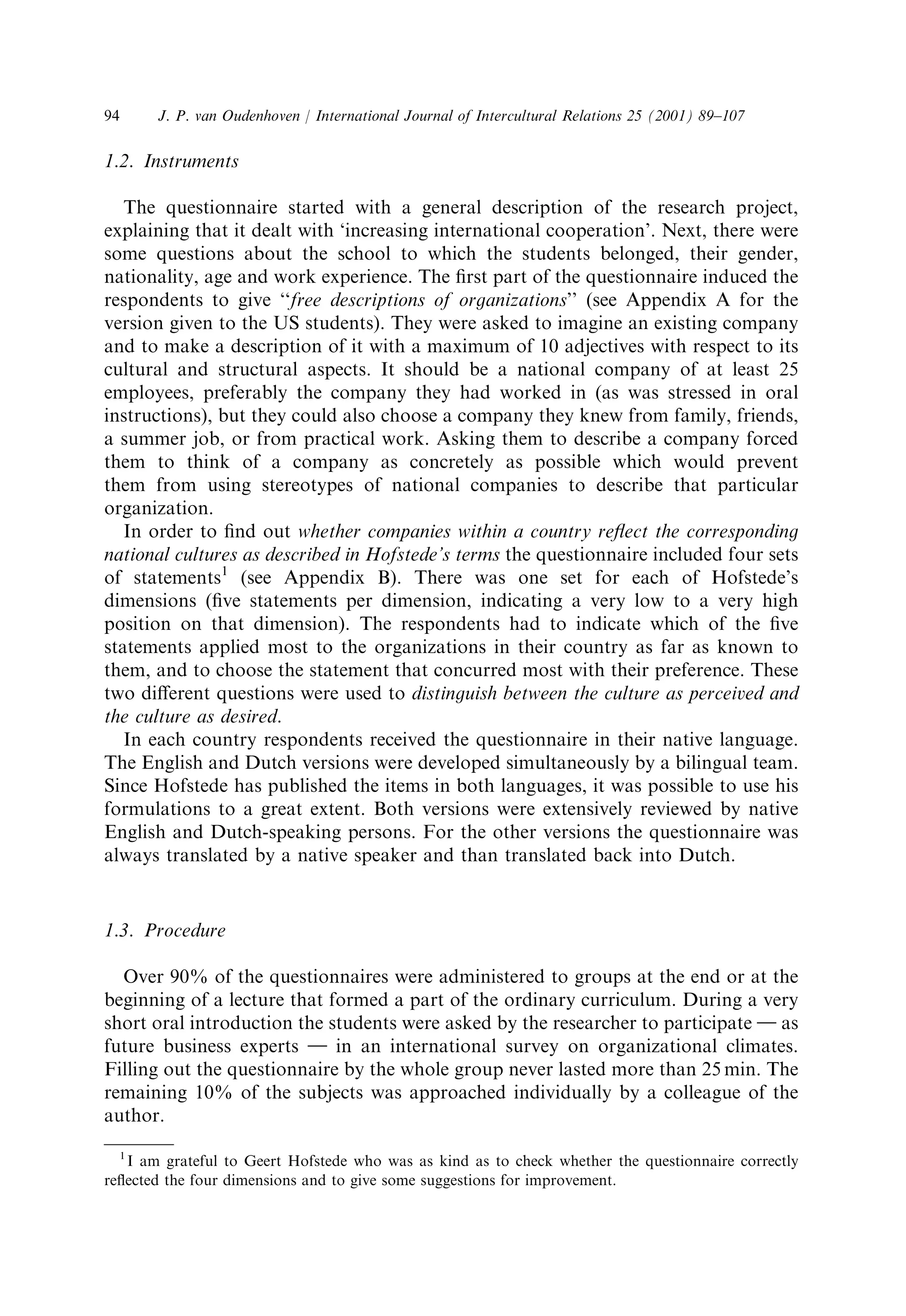This study aimed to cross-validate Hofstede's cultural dimensions by surveying over 800 business students across 10 countries about their perceptions and desires regarding organizational culture. Findings supported Hofstede's dimensions, showing that companies reflect national cultures, yet there was little correlation between perceived and desired cultures. The research underscores the importance of understanding national cultures in improving international cooperation and highlights discrepancies between actual and preferred organizational cultures.


















